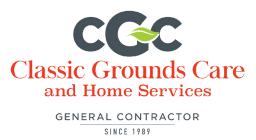
When it comes to extending the life of your roof, Kitsap County homeowners have more options than ever. From protective roof sprays to shingle sealers, there’s no shortage of buzz around new products designed to delay roof replacement. But are these treatments worth it—or just a costly detour?
Here’s what you need to know before investing in roof maintenance or moving forward with a full replacement.
Do Roof Treatments Actually Work?
Many modern roof sealers promise to rehydrate shingles, reduce brittleness, and extend lifespan. These treatments are designed to restore pliability and protect against the wear and tear of Pacific Northwest weather.
One common test measures a shingle’s pliability, simulating wind damage by bending shingles at a 90-degree angle. In some cases, both treated and untreated shingles passed—indicating no major difference in real-world durability.
Other tests, like fire resistance and hail impact, showed minimal improvement with treatment. In fact, shingles treated with roof spray or sealants were still damaged enough to justify full replacement by insurance standards.
How Permeable Are Treated Shingles?
Moisture permeability plays a big role in long-term performance. Treated shingles were found to be less permeable than untreated ones, but still significantly more porous than brand-new shingles. For example:
-
New shingle: permeability rating of 0.90
-
Treated shingle: rating of 3.60
That’s four times more permeable—something to consider when deciding whether to treat or replace.
When Roof Maintenance Does Make Sense
If your roof is in good condition and you’ve kept up with seasonal roof cleaning, moss treatment, and gutter maintenance (especially important here in Poulsbo, Bremerton, and Silverdale), then light repairs and protective coatings might help you get a few more years out of it.
But if you’re seeing signs like:
-
Curling shingles
-
Granule loss
-
Staining, rust, or algae
-
Punctures from hail or fasteners
-
Leaks near flashing or joints
…then no spray or coating will restore structural integrity or solve underlying issues. In these cases, replacement is the smarter long-term investment.
The Real Reason Roofs Leak?
Most leaks aren’t caused by failing shingles—they’re caused by improperly installed or aging flashing. Once water gets in, it can quickly lead to costly damage beneath the shingles, especially if plywood or insulation is exposed.
When to Start Budgeting for a New Roof
If your roof is 20+ years old or showing widespread wear, it’s time to think long-term. Many Kitsap County homeowners are now exploring low-interest home improvement loans to finance roof replacement—especially before small issues become expensive structural repairs.
Need Help Deciding? Ask the Local Pros
At Classic Grounds Care & Home Services, we’re happy to assess whether your roof can benefit from treatments—or if it’s time to plan for a new one. Serving Poulsbo, Bremerton, Silverdale, Gig Harbor, and beyond, our team provides honest guidance and dependable service.
📞 Call or text us today for a free, no-obligation quote. (360) 271-0527
We’ll help you protect your investment with practical solutions that fit your home—and your budget.



